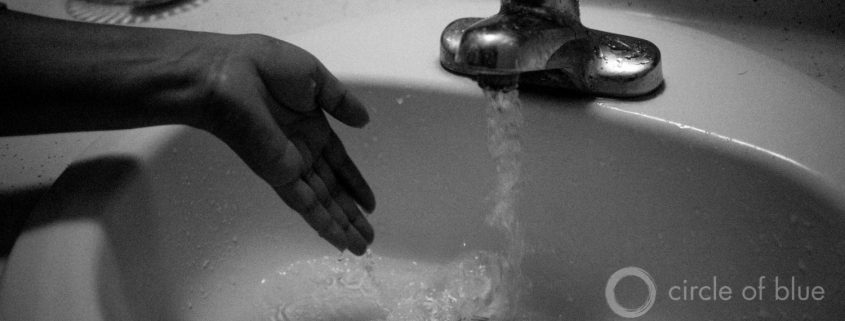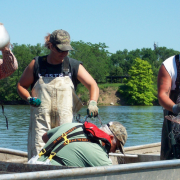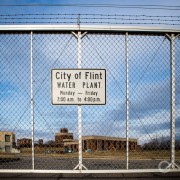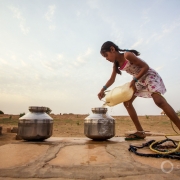California Designs First Statewide Water Affordability Program
Many questions before the program begins operating.
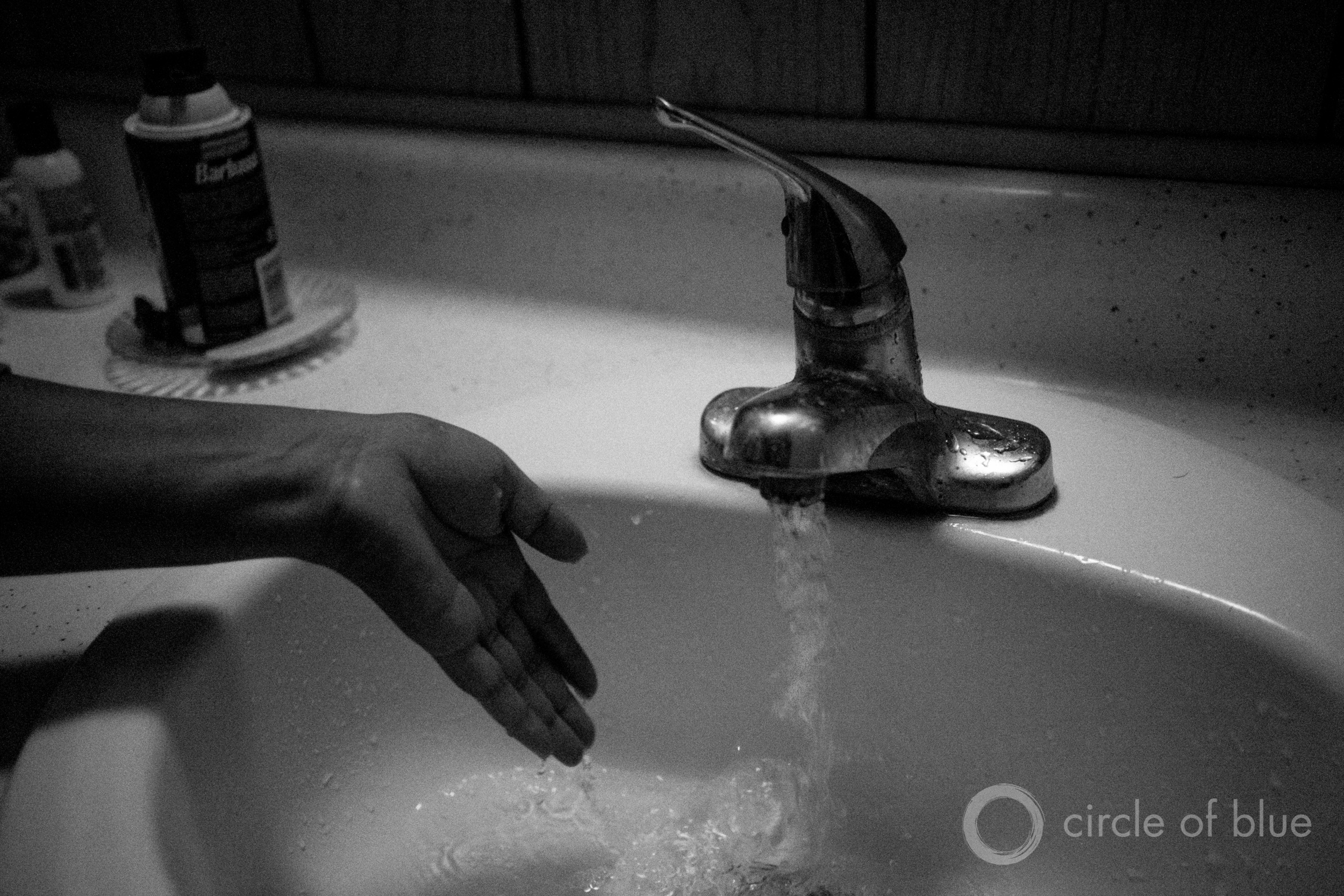
California officials are developing the nation’s first state program to assist poor families who have trouble paying their water bill. Photo © Matt Black
By Brett Walton, Circle of Blue
Prompted by a 2015 state law, the State Water Resources Control Board has begun designing a program to provide state aid to individuals and families who need help paying their water bills. Due to the Legislature by February 1, 2018, California is determined to be the first to use state funds to subsidize water service for poor residents, water rate experts say.
California is in the vanguard of what is becoming a nationwide movement for affordable water. The cost of water service is increasing across the country as cities repair old pipes, overhaul treatment facilities, and comply with state and federal drinking water regulations. Meanwhile, the incomes of the poorest Americans, though they rose at an encouraging rate in 2015, have not kept pace with the rising cost of household needs for food, housing, phone service, healthcare, and other essentials, including water.
Interest in the topic is widespread. Utilities, often at the forefront of the affordability question, are expanding or reworking their aid packages. Philadelphia’s water utility, for one, is testing an income-based water rate, which will be rolled out by next spring. Federal officials are interested, too. The U.S. Environmental Protection Agency is studying affordability, as are several expert groups that are advising the agency while it prepares a new national drinking water strategy, due in December. The U.S. Senate held a hearing in April on the cost of water service, and earlier that month U.S. officials from four government agencies testified before the Inter-American Commission on Human Rights on access to water in the United States. It was the first time that U.S. authorities had appeared in front of the commission to address domestic drinking water access.
All of which makes California an interesting case study, says Stacey Isaac Berahzer of the Environmental Finance Center at the University of North Carolina. There is much work to do. Comments from water board officials at a public meeting in Fresno, on October 12, indicate that the state’s thinking about the program is still in its very earliest stages.
“We’ll be collecting a certain amount of money in some way so that it gets to people to help pay their water bill,” said Max Gomberg of the State Water Resources Control Board. The Fresno meeting was the first of five forums over the next month to gather public input on the program.
The ambiguity in Gomberg’s statement reflects the difficulty of the water board’s task. It must estimate statewide needs based on financial circumstances that vary from household to household. It must also find a funding source, most likely taxes or fees, that does not run afoul of state rules that prohibit utilities from charging higher rates on one group of customers to subsidize another.
The water board identified four main questions that will guide the development of the program:
-
1) Who is eligible?
2) How much aid will be offered and what form will it take (a rebate, a tax credit, or a reduced bill)?
3) How will the state pay for it?
4) How will it be administered?
Regarding eligibility, Gomberg said that the water board is considering whether enrollment for other services such as Medicaid or home-heating assistance can be used as a proxy, to reduce paperwork and processing. Other questions: At what percent of monthly income does water become unaffordable? How should the state account for renters and those who live in apartments and might not be directly billed for water?
Measuring affordability is a challenge. The U.S. Environmental Protection Agency uses median household income for a utility’s service area as the basis for affordability. Water bills are deemed “unaffordable” if they exceed 2.5 percent of the median income. Numerous critics, however, point out that this is a blunt tool. Poorer residents may be paying far more as a percent of their income.
A 2013 study by the Pacific Institute, Community Water Center, and Fresno State University used more detailed data that incorporated household income. The researchers found that nearly one-quarter of households in the Sacramento metropolitan region were paying more than two percent of household income on water. Two percent is the affordability threshold that California uses.
Private wells are another issue. Generally households that use a well are responsible for maintenance and testing. Gomberg said that the water board, which estimates as many as two million Californians are served by private wells, would consider using state aid if a family could not afford maintenance.
“We’re trying to implement the right to water,” Gomberg said, referring to California’s 2012 law that established a state role in ensuring water access for all residents. “So we would look at including private well owners.”
Quality is another matter, but one that is probably beyond the water affordability program’s mandate. Many towns in the Central Valley and Salinas Valley, two major farm regions, supply water to homes with high levels of nitrates, which can kill an infant. Not only might it be unaffordable, the water is undrinkable. The water board is considering whether families who buy bottled water because their tap water is unsafe should be eligible for aid under the affordability program. Per gallon, bottled water is dozens or hundreds of times more expensive than tap water.
All of the ideas will be incorporated into a draft plan, which will be released early next year, Gomberg said.
The plan, once finalized by February 2018, is only a first step. The Legislature will have to approve a funding source, probably taxes or fees, Gomberg said. The earliest the program might begin handing out aid is 2019, he reckoned.
Brett writes about agriculture, energy, infrastructure, and the politics and economics of water in the United States. He also writes the Federal Water Tap, Circle of Blue’s weekly digest of U.S. government water news. He is the winner of two Society of Environmental Journalists reporting awards, one of the top honors in American environmental journalism: first place for explanatory reporting for a series on septic system pollution in the United States(2016) and third place for beat reporting in a small market (2014). He received the Sierra Club’s Distinguished Service Award in 2018. Brett lives in Seattle, where he hikes the mountains and bakes pies. Contact Brett Walton

